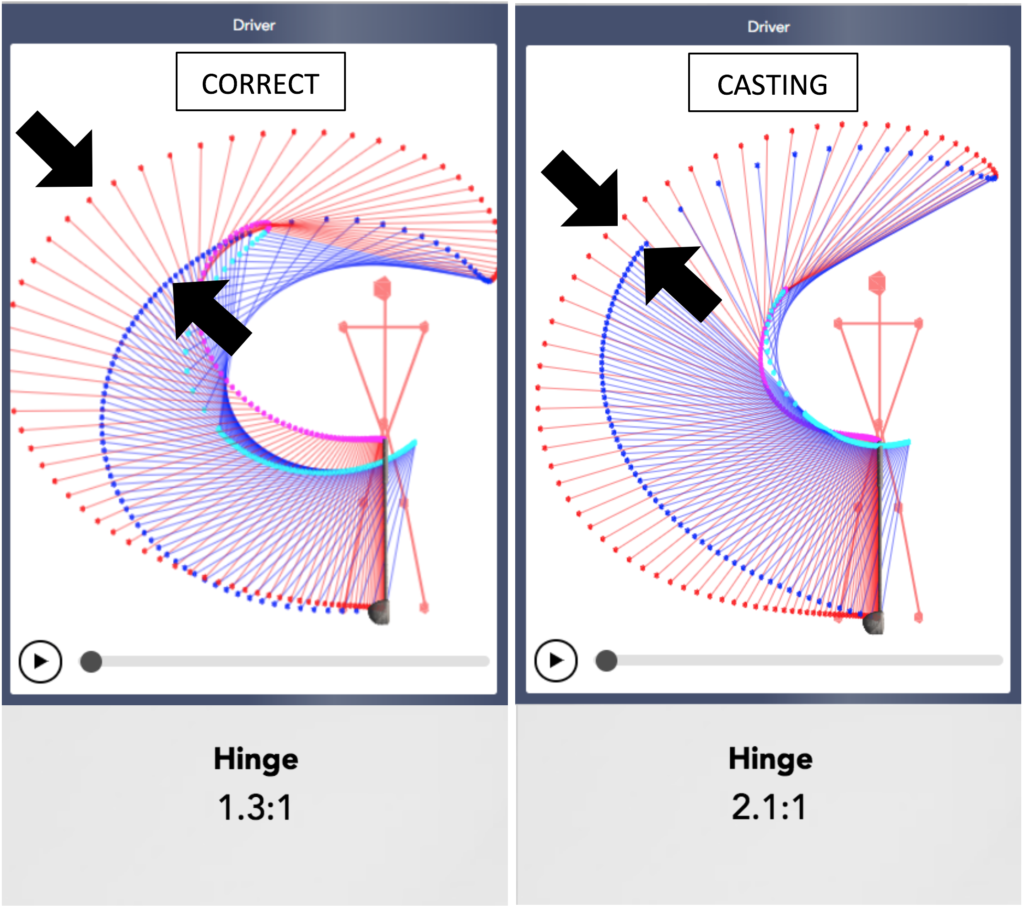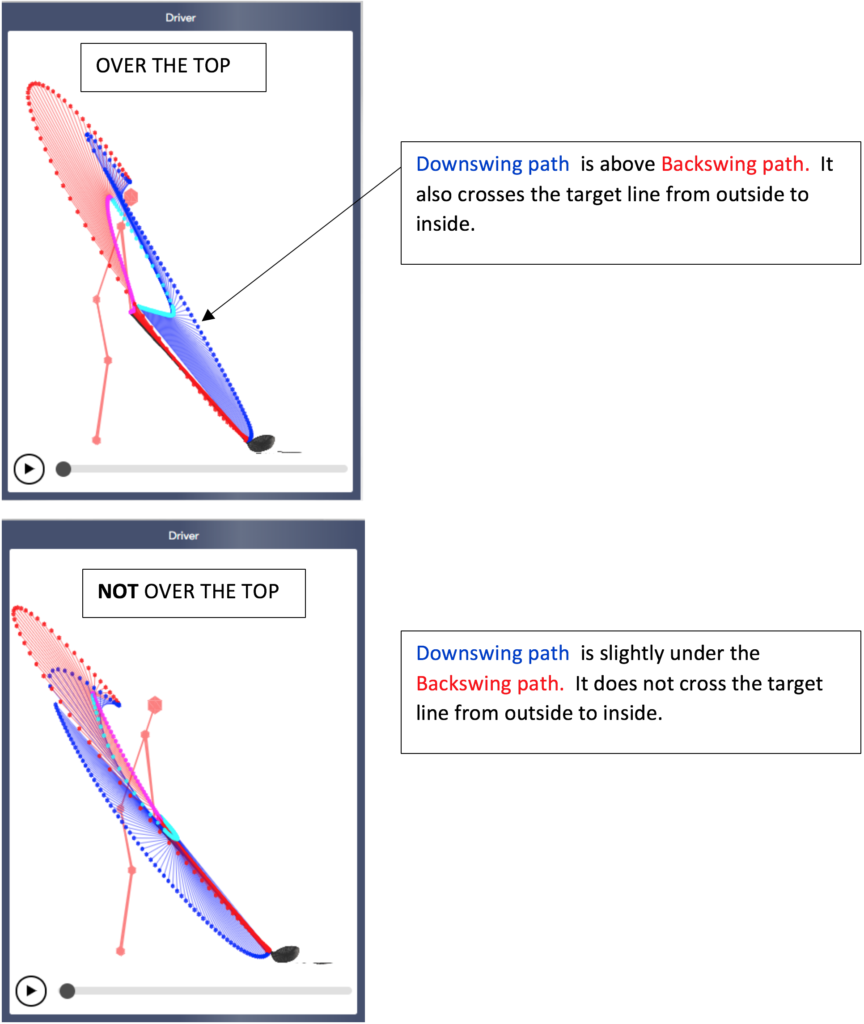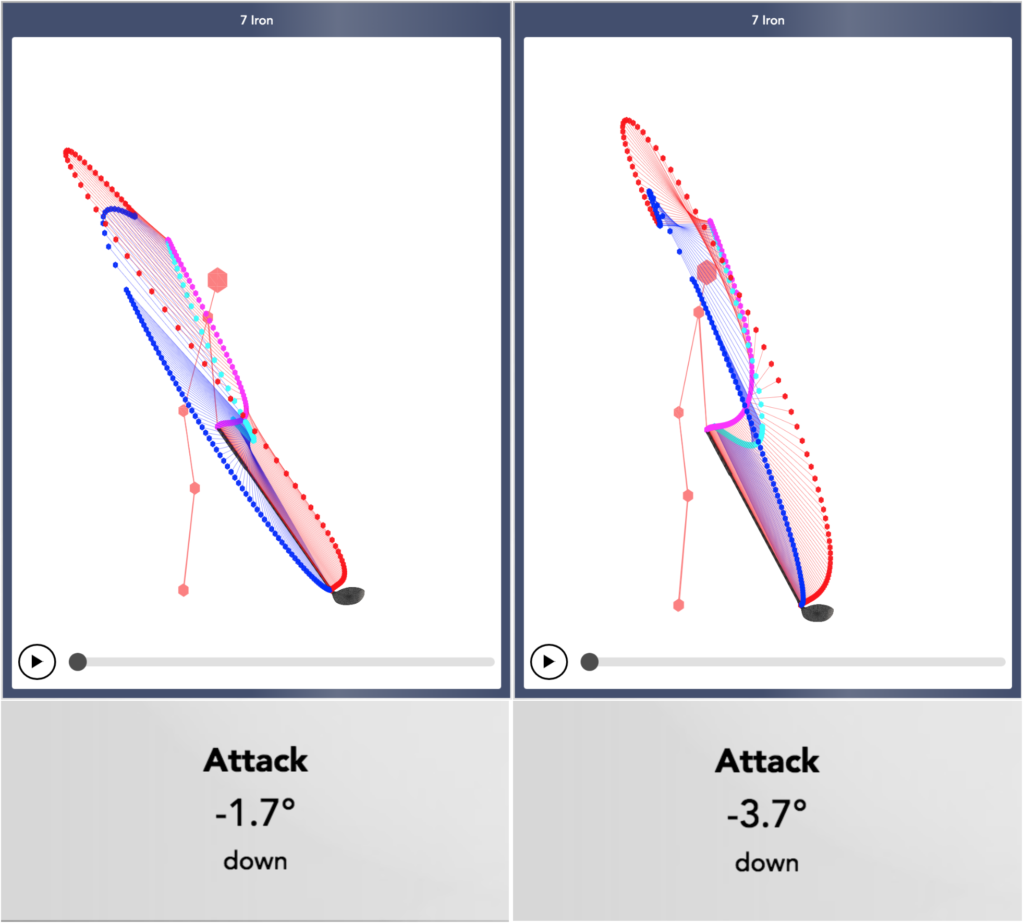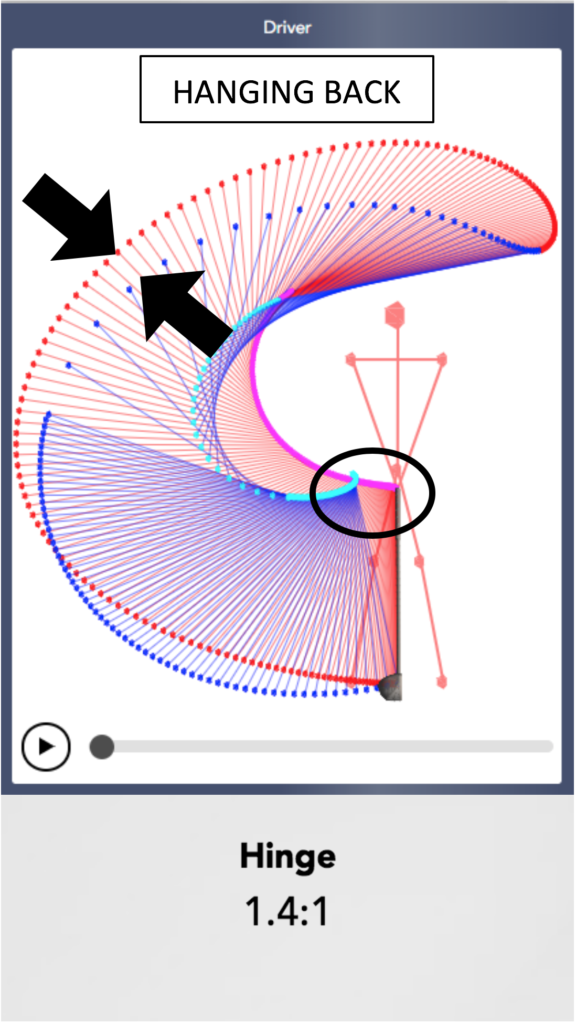How to Read Your 3D Swing
ClubHub draws an accurate picture of the path the club travels during a golf swing. At Kinetek Sports, we named this graphic “3D Man.” There is a lot a player or coach can discern by properly interpreting this graphic. Here we will discuss a partial list of swing qualities you can evaluate with ClubHub’s 3D graphic. This blog post will give you specific examples and techniques to make these evaluations. First, it is important to understand the colors used in drawing the 3D graphic.
Red Dots: Trace the path traveled by the club head during the backswing
Dark Blue Dots: Trace the path traveled by the club head during the downswing
Pink Dots: Trace the path traveled by the club handle during the backswing
Aqua Dots: Trace the path traveled by the club handle during the downswing
Is Your Hinge Value Hindering Your Swing?
Early release of wrist hinging (aka casting the club): In combination with ClubHub’s Hinge value parameter, the 3D graphic can be used to diagnose early release of the wrist set – often referred to as casting the club. Below are two swings that show correct wrist release and casting. Take note of the difference in separation of the paths of the club head on the backswing (red) and the downswing (blue) for the two swings below. You will also note that the Hinge value for the correct swing is less than 1.8:1 whereas the casting example is > 1.8:1.

Crossing Paths
Coming over the top: This common flaw can be seen in the 3D graphic when looking down the line, i.e. toward the target from behind the player. To get this view double tap the 3D graphic to snap to Down-the-Line view. You will see the perspective change as if you walked behind the player.

Plane and Simple
Steep and shallow swing planes: Using the Down-the-Line view, you can also analyze your swing plane to see if you have a steep, neutral, or shallow plane and how it is affecting your ball flight. Monitor your plane on the 3D graphic along with your angle of attack parameter to control how steep or shallow you are coming down on the ball. The best way to see changes in your swing plane is by using the side-by-side swing compare feature of the ClubHub web portal, theHub. Go to the range and try changing the steepness of your swing. You may find a cure you didn’t even know you needed!

Hanging Out
Weight shift to the lead leg: When used in combination with the Hinge value, you can use the 3D graphic to diagnose ‘hanging back’ or a failure to transfer weight to the lead leg at impact. If the Hinge value is 1.8:1 or lower and the club head path on the backswing and downswing are nearly the same, this is not an early release flaw, but is due to the player not adequately shifting their weight to the lead leg during the downswing.
The swing below shows a similar club head path to the casting example with two important differences. First, the Hinge value is less than 1.8:1. Second, the hands are behind the ball at impact. Using the Hinge value we are able to determine that this swing is flawed due to the player hanging back since there is no evidence of casting.

Leave a Reply